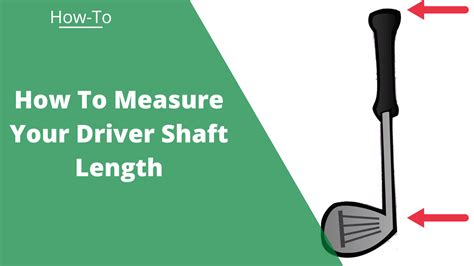Driver Length Matters: Here's How to Measure It
Choosing the right golf driver is crucial for maximizing distance and accuracy. While many factors contribute to a successful drive, one often overlooked aspect is driver length. The length of your driver significantly impacts your swing mechanics, clubhead speed, and overall performance. This article will guide you through understanding the importance of driver length and how to accurately measure it to find the perfect fit.
Why Does Driver Length Matter?
The length of your driver directly affects several key aspects of your swing:
-
Swing Arc: A longer driver necessitates a larger swing arc. This can be beneficial for generating more clubhead speed, but only if you have the flexibility and strength to execute a full, controlled swing. A shorter driver allows for a more compact swing, potentially improving accuracy for golfers with less power.
-
Clubhead Speed: While a longer driver can lead to increased clubhead speed, this isn't always the case. If you struggle to maintain control with a longer club, your clubhead speed might actually decrease due to compensations in your swing.
-
Launch Angle: Driver length influences the launch angle of the ball. Longer drivers tend to produce a higher launch angle, which can be advantageous for players with lower swing speeds. However, too high a launch angle can lead to a loss of distance.
-
Accuracy: This is where the trade-off between distance and accuracy becomes apparent. Longer drivers offer the potential for greater distance, but often at the cost of accuracy. Shorter drivers generally lead to more controlled shots, but potentially sacrifice distance.
How to Measure Your Driver Length
Measuring your driver length is straightforward. You'll need a ruler or tape measure. Here's how to do it:
-
Lay the Driver Flat: Place your driver on a flat, level surface.
-
Measure from the Ground to the Top of the Shaft: Begin measuring from the bottom of the clubhead (where it meets the ground) to the very top of the shaft. This measurement is your total club length. Ignore the grip for this measurement.
-
Record the Measurement: Note the length in inches. This will be a key piece of information when comparing drivers or seeking advice from a club fitter.
Important Note: Many manufacturers use slightly different methods for measuring club length, and this variation can be as much as 1/4 inch. Don't obsess over tiny differences.
What Driver Length is Right for Me?
Determining the ideal driver length isn't a one-size-fits-all solution. Several factors should be considered:
-
Height: Taller golfers generally benefit from longer drivers, while shorter golfers often perform better with shorter clubs.
-
Swing Speed: Players with higher swing speeds might prefer longer drivers to maximize distance, while those with lower swing speeds might benefit from a shorter driver for improved control.
-
Swing Type: Your swing type, whether it's an over-the-top, in-to-out, or other variations, will also impact the optimal driver length for you.
-
Experience Level: Beginners might find shorter drivers easier to control, while experienced players might experiment with longer lengths to increase distance.
H2: What are the common driver shaft lengths?
Standard driver shaft lengths typically range from 44.5 to 46 inches for men's clubs and from 42.5 to 44 inches for women's clubs. However, these are just averages, and the optimal length will depend on individual physical attributes and swing characteristics. Many custom fitters offer a wide range of options beyond these standard measurements.
H2: How do I know if my driver is too long or too short?
If your driver is too long, you may experience a loss of control, inconsistent ball striking, and decreased accuracy. If it's too short, you might struggle to generate enough clubhead speed and distance. Inconsistency in your shots, slices, hooks, and difficulty controlling the ball's trajectory are all signs that your driver length may not be ideal.
H2: Can I adjust my driver length?
While you can't directly adjust the length of a standard driver shaft, you can explore options like getting custom-fitted for a driver with a specific shaft length or working with a club fitter to adjust the grip size and/or position for a better fit.
Conclusion
Finding the right driver length is a key element in improving your golf game. By understanding how driver length affects your swing and accurately measuring your current driver, you can make informed decisions to improve your performance on the course. Remember, consulting with a professional club fitter can provide personalized guidance and ensure you’re using the optimal equipment for your unique swing and physique. Don't hesitate to seek expert advice to maximize your potential!

